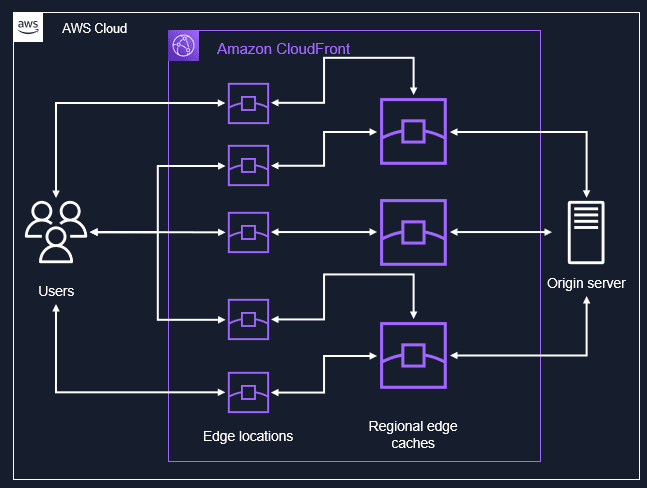In today’s digital-first world, the speed and security of content delivery are not just nice-to-haves but critical components of any successful online presence. Amazon Web Services (AWS) offers a solution to enhance the user experience with its fast and secure content delivery network (CDN) service, known as Amazon CloudFront.
What is Amazon CloudFront?

Amazon CloudFront is a web service that speeds up the distribution of your static and dynamic web content, such as .html, .css, .js, and image files, to your users. It delivers your content through a worldwide network of data centers called edge locations. When a user requests content that you're serving with CloudFront, the request is routed to the edge location that provides the lowest latency (time delay), so the content is delivered with the best possible performance. CloudFront is also used to protect your applications against common web exploits that might affect application availability, compromise security, or consume excessive resources.
Accelerating Content Delivery with Global Edge Locations and Regional Edge Caches

Amazon CloudFront ensures that users anywhere in the world can access online content quickly and securely.
- It uses a global network of over 400 edge locations, which act as AWS points of presence. When a user requests content, CloudFront routes this request to the nearest edge location, optimizing speed and reducing latency.
- Beyond these edge locations are regional edge caches, situated in 13 strategic regions. These caches offer an additional layer of caching and can store content for longer periods than individual edge locations, making them suitable for content that changes less frequently.
- Together, these components work to deliver content efficiently from the origin server to the user, significantly improving the user experience for websites and web applications.
But CloudFront isn't just about speed. It also offers a range of security features to protect your applications and content. This includes AWS Shield Standard, which protects against DDoS attacks, and AWS Certificate Manager for managing SSL/TLS certificates. Additionally, you can integrate CloudFront with other AWS services such as Amazon S3, EC2, AWS WAF, and Lambda@Edge for a more robust web application setup.
By leveraging the power of Amazon CloudFront, businesses can ensure that their content is always available, secure, and delivered with the performance that today's internet users expect.



Top comments (0)